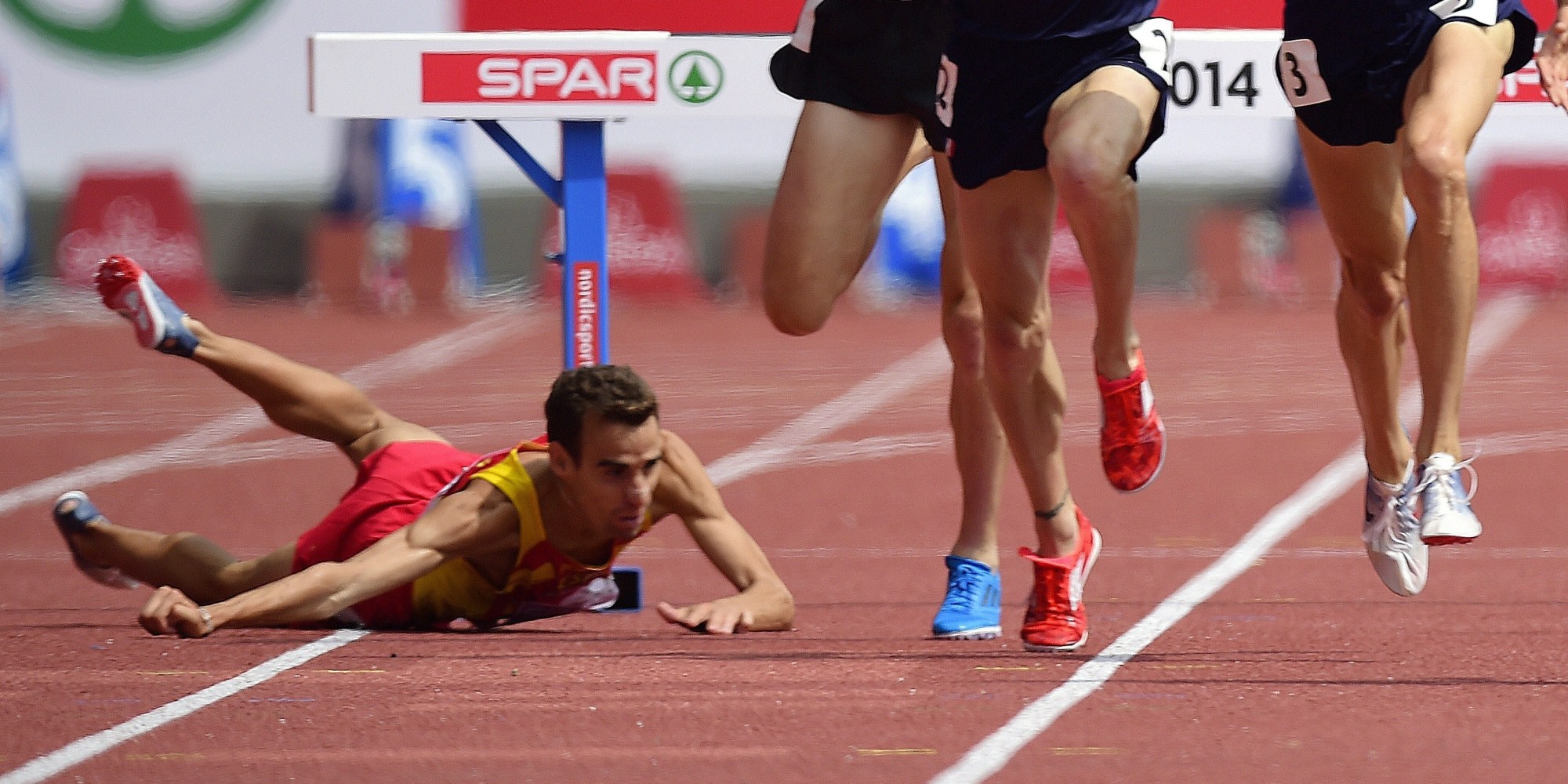The Impact of a Steeplechase Fall on Rider and Horse

Steeplechase racing, with its inherent risks, presents a significant challenge to both rider and horse. Falls are a common occurrence in this demanding sport, and their consequences can be severe, affecting both the physical and mental well-being of the participants.
Rider Injuries, Steeplechase fall
Falls in steeplechase racing can lead to a wide range of injuries for the rider. The impact of the fall, the speed of the horse, and the nature of the terrain can all contribute to the severity of the injury.
- Head Injuries: Concussions, skull fractures, and traumatic brain injuries are common due to the rider’s head impacting the ground or obstacles.
- Spinal Injuries: Whiplash, spinal fractures, and even paralysis can occur from the sudden impact of the fall or the rider’s body being thrown against the horse.
- Fractures: Broken bones are common in steeplechase falls, particularly in the limbs, ribs, and pelvis.
- Soft Tissue Injuries: Muscle strains, ligament tears, and contusions are frequent, often resulting from the rider’s body being thrown around during the fall.
Preventing Steeplechase Falls

Steeplechase racing, with its thrilling combination of speed, jumps, and challenging terrain, inherently involves risk. While falls are an unfortunate reality, a well-structured training program, appropriate safety equipment, and adherence to best practices can significantly minimize the likelihood of these incidents. This section explores crucial aspects of preventing falls in steeplechase racing, focusing on rider and horse training, safety gear, and course navigation techniques.
Training Program for Riders and Horses
A comprehensive training program for both riders and horses is essential for ensuring safety and preventing falls. This program should address physical conditioning, technical skills, and mental preparedness.
- Physical Conditioning: Riders and horses must be physically fit to handle the demands of steeplechase racing. This involves regular exercise, strength training, and cardiovascular conditioning. For riders, core strength, balance, and flexibility are crucial. Horses require muscle development, particularly in their hindquarters and back, to support jumping and sustained effort.
- Technical Skills: Training should emphasize the development of essential riding skills, including proper balance, posture, and hand position. Riders must learn to control their horse effectively, particularly when navigating obstacles and challenging terrain. Horses require training in jumping techniques, focusing on proper takeoff, clearance, and landing.
- Mental Preparedness: Steeplechase racing demands mental focus and composure. Riders must be able to handle pressure, maintain concentration, and make quick decisions. Horses need to be calm and responsive to the rider’s cues, even in challenging situations.
Safety Equipment
The use of appropriate safety equipment can significantly reduce the severity of injuries in the event of a fall.
- Helmets: Helmets are mandatory in most steeplechase races and should meet safety standards. They provide critical head protection in case of a fall.
- Body Protectors: Body protectors, also known as vests, offer additional protection for the rider’s torso, spine, and ribs. These vests are designed to absorb impact and minimize injuries.
- Boots: Boots with reinforced shanks and ankle support provide stability and protection for the rider’s feet and ankles.
- Horse Tack: Properly fitted tack, including saddles, bridles, and stirrups, is essential for the horse’s comfort and safety. It should be inspected regularly for wear and tear.
Best Practices for Riding over Hurdles and Navigating the Course
Experienced riders and trainers emphasize the importance of proper technique and course awareness to minimize the risk of falls.
- Approaching Hurdles: Riders should approach hurdles with a balanced and controlled gait, ensuring the horse has sufficient momentum for the jump. The rider’s position should be centered, with a firm grip on the reins.
- Taking Off: The horse should take off from the hurdle with a smooth, powerful jump, maintaining a balanced posture throughout the flight. The rider should stay with the horse’s motion, avoiding unnecessary movements.
- Landing: The horse should land softly, with its legs absorbing the impact. The rider should remain balanced and secure, allowing the horse to recover from the jump.
- Course Awareness: Riders should be aware of the course layout, including the location of hurdles, turns, and other obstacles. They should anticipate changes in terrain and adjust their riding accordingly.
Steeplechase fall – You know, watching those steeplechase runners hurdle those fences, I always think, “Man, that’s gotta be rough on the back.” But then I remember, they probably have a sweet setup at home, like the humanscale freedom leather task chair with headrest to soothe those sore muscles after a race.
I mean, if I was running that much, I’d definitely need a chair that could handle the punishment.
Steeplechase, eh? That water jump, man, it’s like a lottery. You either clear it like a boss or you end up face-planting in the mud. Remember Lamecha Girma? The dude who dominated the 3000m steeplechase?
Well, he had a rough one, check out his injury update here , but thankfully he’s on the road to recovery. Anyway, the point is, steeplechase is a wild ride, but it’s also a reminder that even the best athletes can fall.